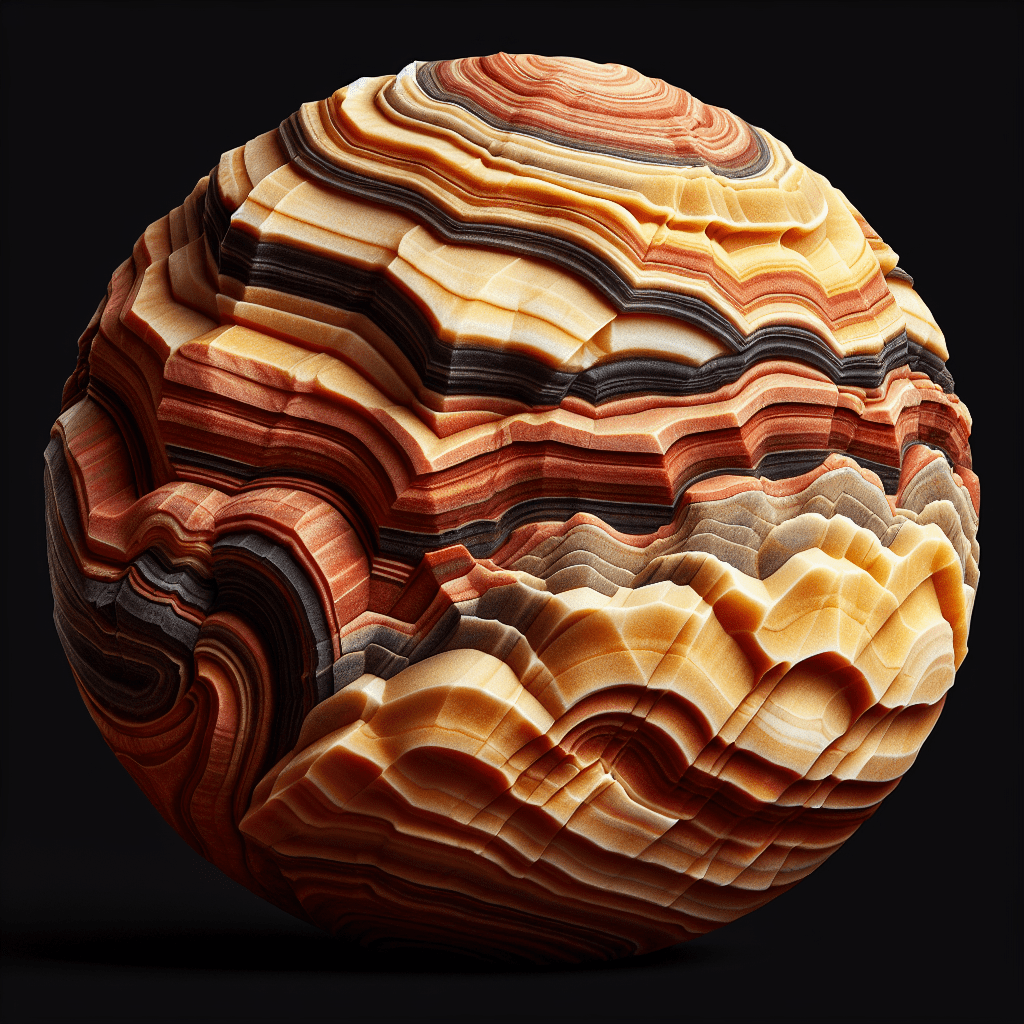Indian sandstone is a type of sedimentary rock that is widely used in construction and architecture. It is known for its durability, versatility, and aesthetic appeal. In Indian culture, sandstone has a significant historical and cultural significance. It has been used in the construction of temples, palaces, and monuments for centuries.
The formation of Indian sandstone is a geological process that takes millions of years. It is formed from the accumulation of sand particles, which are then compacted and cemented together over time. The unique geological characteristics of India, such as its diverse landscapes and climatic conditions, contribute to the formation of different types and colors of Indian sandstone.
Formation and Geological Background
The formation of Indian sandstone begins with the erosion of rocks and minerals, which results in the deposition of sand particles. Over time, these sand particles are compacted and solidified through various geological processes such as pressure and cementation. The different types of Indian sandstone are found in specific regions of India, such as Rajasthan, Madhya Pradesh, and Uttar Pradesh.
Indian sandstone is known for its unique characteristics and properties due to its geological formation. It is a naturally durable and weather-resistant material, making it suitable for both indoor and outdoor applications. The composition and texture of Indian sandstone vary depending on the specific region and geological conditions in which it is formed.
Types and Colors of Indian Sandstone
There are several popular types of Indian sandstone, each with its own distinct characteristics and colors. Raj Green is a popular choice known for its earthy tones and subtle variations in color. Kandla Grey is a light grey sandstone with a smooth texture, while Autumn Brown features warm brown hues with occasional purple and grey streaks.
Indian sandstone comes in a wide range of colors, including red, yellow, green, brown, and grey. These colors are a result of the presence of different minerals and impurities in the sandstone. The patterns and veining found in Indian sandstone add to its natural beauty and uniqueness.
When comparing different types of Indian sandstone, factors such as durability, texture, and suitability for specific applications should be considered. Some types of sandstone may be more suitable for heavy foot traffic areas, while others may be better suited for decorative purposes.
Advantages and Benefits of Indian Sandstone
Indian sandstone offers several advantages and benefits that make it a popular choice in construction and architecture. Firstly, it is highly durable and long-lasting, making it ideal for outdoor applications such as paving, flooring, and wall cladding. It can withstand harsh weather conditions, including extreme temperatures and moisture.
In terms of maintenance, Indian sandstone requires minimal upkeep. It is resistant to staining and can be easily cleaned with water and mild detergent. Regular sealing can further enhance its longevity and appearance.
Indian sandstone is also versatile and can be used in a variety of applications. It is commonly used in the construction of buildings, monuments, and temples. Additionally, it is a popular choice for landscaping projects, such as garden pathways, patio areas, and retaining walls.
Uses and Applications of Indian Sandstone
Indian sandstone has been widely used in architecture and construction throughout history. Many famous buildings and monuments in India, such as the Red Fort and Amber Palace, feature Indian sandstone. Its natural beauty and durability make it a preferred choice for both traditional and contemporary designs.
In landscaping projects, Indian sandstone can be used to create stunning garden pathways, patio areas, and retaining walls. Its natural colors and textures blend seamlessly with the surrounding environment, creating a harmonious and aesthetically pleasing outdoor space.
Installation and Maintenance Tips
Proper installation is crucial to ensure the longevity and stability of Indian sandstone. It is important to prepare the base and ensure proper drainage to prevent water accumulation. The sandstone should be laid in a pattern that allows for proper water runoff.
Maintaining Indian sandstone is relatively simple. Regular sweeping and washing with water and mild detergent can help keep it clean. It is important to avoid using harsh chemicals or abrasive cleaning tools that can damage the surface of the sandstone.
Common issues that may arise during installation and maintenance include cracking, staining, and efflorescence. Cracking can be minimized by using a flexible adhesive and allowing for proper expansion joints. Staining can be prevented by promptly cleaning spills and sealing the sandstone. Efflorescence, a white powdery residue, can be removed by scrubbing with a mild acid solution.
Pricing and Availability
The pricing of Indian sandstone varies depending on factors such as type, color, size, and finish. Some types of sandstone may be more expensive due to their rarity or unique characteristics. It is recommended to obtain quotes from multiple suppliers to compare prices and ensure a fair deal.
Indian sandstone is widely available in various markets, both in India and internationally. It is exported to countries around the world, making it accessible to architects, builders, and homeowners globally. It is important to source sandstone from reputable suppliers to ensure the quality and authenticity of the product.
Conclusion
Indian sandstone is a versatile and durable material that has been used in construction and architecture for centuries. Its unique colors, patterns, and textures make it a popular choice for both indoor and outdoor applications. The cultural and aesthetic significance of Indian sandstone in India’s architecture and culture cannot be overlooked. With proper installation and maintenance, Indian sandstone can enhance the beauty and functionality of any space.

